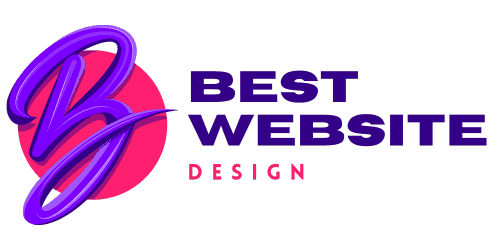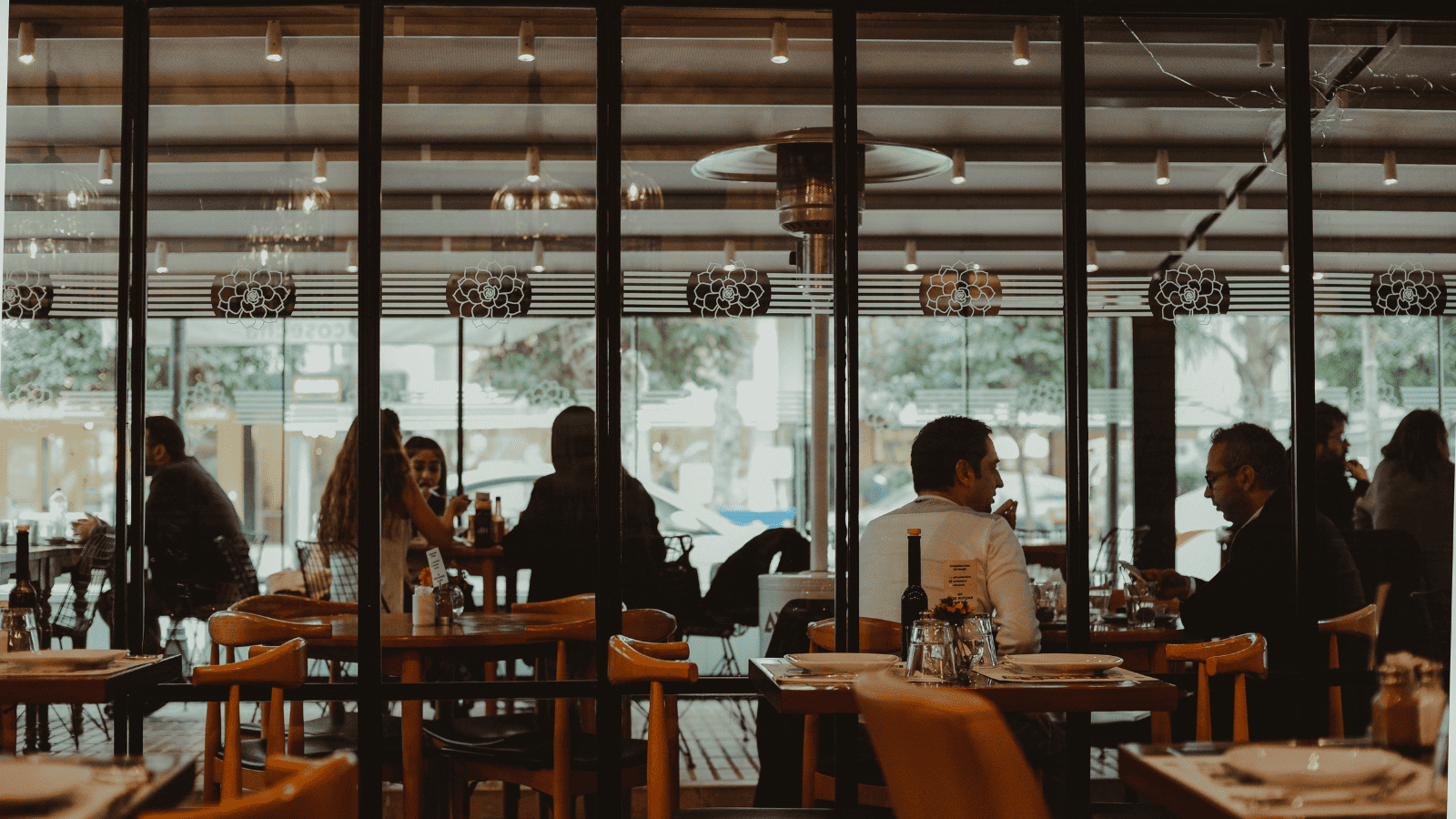Effective Restaurant Website Design: Key Strategies for Success
In today’s digital age, having an effective website is essential for restaurants to attract and engage customers. A well-designed website can create a memorable brand identity, optimize user experience, showcase mouth-watering menus, integrate online ordering, and effectively engage with customers. In this article, we will explore the top website design ideas for restaurants to help them stand out in the competitive food industry.
Table of Contents
Key Takeaways
- Choose the right color scheme, design a unique logo, and craft a catchy tagline to create a memorable brand identity.
- Simplify navigation, implement responsive design, and include high-quality images to optimize user experience.
- Use appetizing food photography, organize menus effectively, and highlight specials and promotions to showcase mouth-watering menus.
- Implement a seamless ordering system, offer multiple payment options, and provide order tracking to integrate online ordering.
- Include customer reviews and testimonials, integrate social media platforms, and offer online reservations to effectively engage with customers.
Creating a Memorable Brand Identity
Choosing the Right Color Scheme
When it comes to choosing the right color scheme for your restaurant website, it’s important to consider the emotions and associations that different colors evoke. Bold colors like red and orange can stimulate appetite and create a sense of excitement, while subtle colors like blue and green can convey a feeling of calmness and freshness.
To help you make an informed decision, here are a few tips:
- Consider your restaurant’s brand personality and target audience. Are you aiming for a modern and trendy vibe or a classic and elegant atmosphere?
- Use color psychology to your advantage. For example, yellow is often associated with happiness and optimism, making it a great choice for a family-friendly restaurant.
- Don’t be afraid to experiment with different color combinations. Use color wheels or online tools to find complementary or contrasting colors that work well together.
Remember, the color scheme you choose should align with your restaurant’s overall brand identity and create a visually appealing experience for your website visitors.
Designing a Unique Logo
When it comes to designing a unique logo for your restaurant, it’s important to consider the overall brand identity you want to portray. Your logo should be memorable and instantly recognizable, reflecting the essence of your restaurant.
One approach to designing a unique logo is to incorporate elements that are specific to your restaurant’s cuisine or theme. For example, if you specialize in Italian cuisine, you could incorporate a pizza slice or a fork and knife in your logo.
Another important aspect to consider is the color scheme of your logo. Colors evoke emotions and can convey different messages. Choose colors that align with your brand identity and create a visually appealing logo.
Lastly, keep in mind that simplicity is key. A cluttered or overly complex logo can be difficult to remember and may not leave a lasting impression on your customers. Opt for a clean and simple design that stands out and represents your restaurant effectively.
Crafting a Catchy Tagline
Crafting a catchy tagline is essential for creating a memorable brand identity. A tagline is a short and memorable phrase that captures the essence of your restaurant and sets it apart from the competition. It should be unique, engaging, and reflect the personality of your restaurant.
A well-crafted tagline can leave a lasting impression on customers and make your restaurant more memorable. Here are some tips for creating a catchy tagline:
- Keep it short and simple: A tagline should be concise and easy to remember. Avoid using complex or jargon-filled language.
- Highlight your unique selling proposition: Your tagline should communicate what makes your restaurant special and different from others.
- Use emotional appeal: Tap into the emotions of your target audience by using words that evoke positive feelings.
Remember, a catchy tagline can help your restaurant stand out and attract customers. Take the time to brainstorm and create a tagline that truly represents your brand.
Optimizing User Experience
Simplifying Navigation
When it comes to website navigation, simplicity is key. Easy and intuitive navigation helps users find what they’re looking for quickly and effortlessly. Here are some tips to simplify navigation:
- Use a clear and concise menu structure that categorizes different sections of your website.
- Limit the number of menu items to avoid overwhelming users.
- Include a search bar for users to easily search for specific content.
Tip: Consider using drop-down menus to further organize your navigation and make it more user-friendly.
By simplifying navigation, you can enhance the user experience and ensure visitors can easily explore your restaurant’s website.
Implementing Responsive Design
Implementing responsive design is crucial for ensuring that your restaurant’s website looks great and functions well on any device. With the increasing use of smartphones and tablets, it’s important to provide a seamless user experience across all platforms.
One way to achieve responsive design is by using a mobile-first approach. This means designing your website with mobile devices in mind first and then scaling up for larger screens. By prioritizing mobile users, you can ensure that your website is easy to navigate and read on smaller screens.
Another important aspect of responsive design is optimizing page load times. Mobile users often have slower internet connections, so it’s important to minimize the file sizes of your images and other media. This will help your website load quickly and keep users engaged.
Lastly, don’t forget to test your website on different devices and screen sizes to ensure that it looks and functions as intended. This will help you identify any issues and make necessary adjustments to provide the best user experience possible.
Including High-Quality Images
When it comes to showcasing your restaurant’s delectable dishes, high-quality images are essential. These images should be professionally taken and carefully selected to entice customers and make their mouths water. By investing in professional food photography, you can capture the essence of your menu items and create a visual experience that leaves a lasting impression.
In addition to high-quality images, it’s important to consider the placement and presentation of these visuals. Organize your menus effectively by categorizing dishes and providing clear descriptions. This helps customers easily navigate through your offerings and find exactly what they’re looking for.
To further enhance the visual appeal of your menus, consider highlighting specials and promotions. This can be done through eye-catching graphics or by using different formatting styles to make these items stand out. By showcasing your best deals, you can entice customers to try new dishes and increase sales.
Remember, a picture is worth a thousand words, so make sure your high-quality images do justice to your delicious menu items.
Showcasing Mouth-Watering Menus
Using Appetizing Food Photography
When it comes to showcasing your restaurant’s menu, appetizing food photography can make a significant impact. High-quality images of your dishes can entice customers and make them crave the food even before they taste it. Here are a few tips to make the most out of your food photography:
- Use natural lighting to capture the vibrant colors and textures of the food.
- Style the dishes to make them look visually appealing and appetizing.
- Experiment with different angles and compositions to create visually interesting images.
Remember, the goal is to make your customers’ mouths water just by looking at the pictures. So invest in professional food photography or learn some basic photography skills to capture the essence of your dishes.
Organizing Menus Effectively
When it comes to organizing menus effectively, it’s important to consider the flow and structure of your menu items. Highlighting your most popular or signature dishes can help draw attention to them and encourage customers to try them. Additionally, grouping similar items together, such as appetizers, entrees, and desserts, can make it easier for customers to navigate your menu.
A table can be a useful tool for presenting structured, quantitative data. For example, you can create a table to showcase nutritional information or pricing options for different menu items. Ensure the table is succinct and formatted correctly in Markdown.
If you have less structured content, like steps or a series of related items, consider using a bulleted or numbered list. This can help break down information into digestible chunks and make it easier for customers to read and understand.
Remember, the goal is to make your menu easy to read and navigate, so customers can quickly find what they’re looking for and make a decision.
Highlighting Specials and Promotions
When it comes to highlighting specials and promotions, it’s important to make them stand out and grab the attention of your customers. One effective way to do this is by using bold text or italics to emphasize the key details.
Additionally, you can use a Markdown table to present structured data, such as the prices and descriptions of your specials. This allows customers to quickly scan and compare the options.
Here’s an example of how you can format a Markdown table:
| Special | Price | Description |
| Pizza | $10 | Delicious |
| Burger | $8 | Juicy |
Alternatively, if you have less structured content, like tips or advice, you can use a bulleted list to present them. This makes it easier for customers to digest the information.
- Offer daily specials to keep customers coming back.
- Highlight seasonal promotions to create a sense of urgency.
- Provide limited-time offers to encourage immediate action.
Remember, the goal is to make your specials and promotions enticing and easy to understand. Experiment with different formatting techniques to find what works best for your restaurant.
Integrating Online Ordering
Implementing a Seamless Ordering System
Implementing a seamless ordering system is crucial for restaurants to streamline their operations and provide a convenient experience for customers. By integrating an online ordering platform, restaurants can offer their menu items for delivery or pickup, allowing customers to place orders from the comfort of their own homes. This not only increases customer satisfaction but also helps restaurants reach a wider audience.
To ensure a smooth ordering process, restaurants should consider offering multiple payment options. This allows customers to choose their preferred method of payment, whether it’s through credit cards, mobile wallets, or cash on delivery. By providing flexibility in payment options, restaurants can cater to a diverse range of customers and enhance their overall ordering experience.
Additionally, it’s important for restaurants to provide order tracking capabilities. This feature allows customers to track the status of their orders in real-time, giving them peace of mind and reducing any potential anxiety about the delivery process. By keeping customers informed about the progress of their orders, restaurants can build trust and loyalty.
In summary, implementing a seamless ordering system with multiple payment options and order tracking capabilities is essential for restaurants looking to enhance their online ordering experience. By prioritizing convenience and customer satisfaction, restaurants can attract more customers and improve their overall operations.
Offering Multiple Payment Options
When it comes to online ordering, providing multiple payment options is crucial for customer convenience and satisfaction. Offering a variety of payment methods such as credit cards, debit cards, mobile wallets, and online payment platforms gives customers the flexibility to choose the option that works best for them. It is important to ensure that the payment process is seamless and secure, providing customers with a sense of trust and confidence.
In addition to traditional payment methods, restaurants can also consider integrating newer technologies such as contactless payments or cryptocurrency. These options can attract tech-savvy customers and provide a modern and innovative image for the restaurant.
Here are some benefits of offering multiple payment options:
- Increased customer satisfaction: By providing a range of payment methods, restaurants can cater to the preferences of different customers, leading to higher satisfaction levels.
- Reduced cart abandonment: Offering convenient payment options can help reduce cart abandonment rates, as customers are more likely to complete their orders when their preferred payment method is available.
- Attracting new customers: By offering a wide range of payment options, restaurants can attract customers who may have specific preferences or limitations when it comes to payment methods.
In conclusion, offering multiple payment options is an essential aspect of a successful online ordering system for restaurants. By providing flexibility and convenience to customers, restaurants can enhance the overall user experience and drive customer satisfaction.
Providing Order Tracking
When it comes to online ordering, providing order tracking is essential for a seamless customer experience. Tracking allows customers to stay informed about the status of their order, reducing anxiety and increasing satisfaction. Implementing a real-time tracking system enables customers to see the progress of their order from preparation to delivery. This transparency builds trust and confidence in your restaurant’s online ordering process.
To effectively provide order tracking, consider the following:
- Integrate a tracking feature into your website or mobile app that allows customers to easily access their order status.
- Send automated notifications to customers at key stages of the order process, such as when the order is confirmed, being prepared, out for delivery, and delivered.
- Provide estimated delivery times to manage customer expectations and reduce uncertainty.
By offering order tracking, you can enhance the overall customer experience and differentiate your restaurant from competitors.
Engaging with Customers
Including Customer Reviews and Testimonials
Customer reviews and testimonials are powerful tools for building trust and credibility. Positive reviews can greatly influence potential customers and encourage them to choose your restaurant. It’s important to showcase these reviews prominently on your website to highlight the positive experiences of past customers.
One effective way to display customer reviews is by using a testimonials section on your homepage. This section can feature short quotes from satisfied customers, along with their names and possibly even their profile pictures. This adds a personal touch and helps potential customers connect with the positive experiences of others.
In addition to testimonials, you can also include a ratings and reviews table that provides a summary of customer ratings for different aspects of your restaurant, such as food quality, service, and ambiance. This table can help potential customers quickly assess the overall reputation of your restaurant.
Remember, customer reviews and testimonials are a powerful marketing tool. Make sure to regularly update and showcase them on your website to build trust and attract more customers.
Integrating Social Media Platforms
In today’s digital age, social media platforms play a crucial role in connecting restaurants with their customers. By integrating social media platforms into your website, you can leverage the power of these platforms to engage with your audience and build a strong online presence.
Benefits of Integrating Social Media Platforms
- Increased brand visibility: By connecting your website with social media platforms such as Facebook, Instagram, and Twitter, you can reach a wider audience and increase your brand’s visibility.
- Direct communication with customers: Social media platforms provide a direct channel for communication with your customers. You can respond to their queries, address their concerns, and build a strong relationship with them.
- User-generated content: Integrating social media platforms allows you to showcase user-generated content such as customer reviews, photos, and testimonials, which can enhance your credibility and attract more customers.
Tips for Effective Integration
- Choose the right social media platforms: Identify the platforms that are most popular among your target audience and focus on integrating those platforms into your website.
- Display social media icons prominently: Make sure to place social media icons in a visible location on your website, such as the header or footer, to encourage visitors to connect with you on social media.
- Encourage social sharing: Include social sharing buttons on your website to make it easy for visitors to share your content on their own social media profiles.
Tip: Regularly update your social media profiles with engaging content, such as photos of your dishes, special promotions, and behind-the-scenes glimpses of your restaurant. This will keep your audience interested and encourage them to visit your website and make a reservation.
Integrating social media platforms into your restaurant website can significantly enhance your online presence and help you connect with your customers on a deeper level. By following these tips, you can make the most out of social media integration and create a memorable experience for your audience.
Offering Online Reservations
Online reservations are a convenient way for customers to book a table at your restaurant without the hassle of making a phone call. By implementing an online reservation system, you can streamline the booking process and provide a seamless experience for your customers.
Here are some benefits of offering online reservations:
- Increased Efficiency: With an online reservation system, you can automate the booking process and reduce the time spent on manual reservations.
- Improved Customer Experience: Customers can easily check the availability of tables and make reservations at their convenience.
- Reduced No-Shows: By requiring customers to provide their contact information, you can send reminders and reduce the number of no-shows.
Tip: Make sure your online reservation system is user-friendly and mobile-responsive to cater to customers who prefer to make reservations on their smartphones.
Conclusion
In conclusion, implementing these top website design ideas can greatly enhance the online presence and user experience of restaurants. By incorporating responsive design, eye-catching visuals, easy navigation, and online ordering, restaurants can attract more customers and increase their revenue. It is important for restaurants to stay up-to-date with the latest design trends and continuously optimize their websites to stay competitive in the digital landscape.
Frequently Asked Questions
How can I choose the right color scheme for my restaurant website?
When choosing a color scheme for your restaurant website, consider your brand identity and the emotions you want to evoke. Use colors that align with your restaurant’s theme and cuisine. For example, warm colors like red and orange can stimulate appetite, while cool colors like blue and green can create a calming atmosphere.
What elements should I include in my restaurant’s logo?
Your restaurant’s logo should be visually appealing, memorable, and representative of your brand. It should incorporate elements that reflect your restaurant’s theme, such as food, utensils, or a unique design. Keep it simple and avoid overcrowding the logo with too many details.
How can I create a catchy tagline for my restaurant?
To create a catchy tagline for your restaurant, focus on what sets your establishment apart. Highlight unique features, such as signature dishes, a cozy ambiance, or exceptional service. Keep it short, memorable, and reflective of your brand’s personality.
Why is responsive design important for a restaurant website?
Responsive design ensures that your restaurant website adapts to different screen sizes and devices, providing a seamless user experience. It allows customers to easily navigate and view your website on desktops, smartphones, and tablets, increasing accessibility and engagement.
How can I showcase my restaurant’s menus effectively?
To showcase your restaurant’s menus effectively, organize them in a clear and concise manner. Use descriptive headings, categorize dishes, and provide detailed descriptions. Consider using appetizing food photography to entice customers and highlight your best dishes.
What are the benefits of offering online ordering on my restaurant website?
Offering online ordering on your restaurant website provides convenience for customers, allowing them to place orders from the comfort of their homes or on the go. It can increase sales, streamline the ordering process, and reduce errors. Additionally, it provides valuable customer data for marketing purposes.







